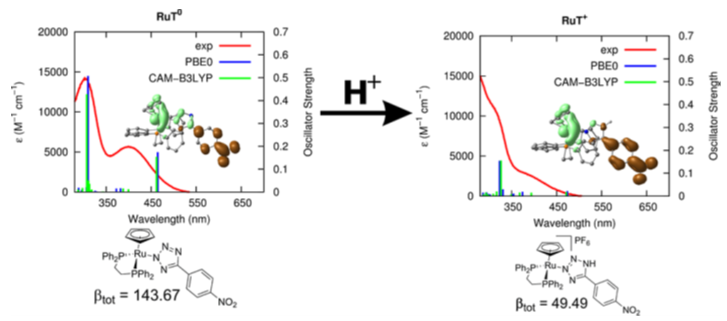Introduction
Nonlinear optical (NLO) material refers to a kind of material whose frequency, phase and amplitude change under the action of external light field, electric field and strain field, thus causing changes in refractive index, light absorption and light scattering. According to their composition, nonlinear optical materials can be roughly divided into inorganic nonlinear optical materials, organic nonlinear optical materials, metal-organic complexes and inorganic-organic hybrid materials.
 Fig.1 Application of NLO materials
Fig.1 Application of NLO materials
Second-order nonlinear optics materials:
Among many nonlinear optical materials, organic second-order nonlinear optical materials based on external stimulus response have a broader application prospect. In addition to the advantages of general nonlinear optical materials, these materials are closely combined with laser technology, and have potential application value in optoelectronic devices, optoelectronic switches and sensors, which has attracted widespread attention. Here we briefly introduce several organic second order nonlinear optical materials.
- Organic second order nonlinear optical switching materials based on photochemical reaction: At present, most of the reported organic second-order nonlinear optical switching materials based on photochemical reactions are based on photochromic groups, which can affect the conjugate system by proton transfer, cis isomerization reaction, and photoinduced ring opening/closing reaction under light. Among them, the chromophore molecule with dimethylaminophenyl as electron acceptor and Pt complex as electron acceptor was doped into polymethyl methacrylate (PMMA), showed good off/on behavior of nonlinear optical properties in solid state by second harmonic (SHG) testing [1].
 Fig.2 NLO materials based on photochemical reaction [1]
Fig.2 NLO materials based on photochemical reaction [1]
- Organic second order nonlinear optical switching materials based on pH regulation: The second order nonlinear optical properties of organic materials are also affected by the ability of the donor and the acceptor to give and take electrons. When the electron-rich group is protonated, the electron-giving ability of the donor end will be reduced, which will affect the nonlinear optical performance. Adding the base to regulate the pH of the system can deprotonate the protonated chromophore, and the recovery of the electron giving ability of the donor end can make the chromophore show nonlinear optical properties again. Florindo [2] synthesized tetrazolium derivatives with push-pull electron structure. The tetrazolium group after coordination is the electron donor group. The combination of the tetrazolium group with proton (CF3SO3H) can significantly reduce its electron donor ability, and thus reduce its nonlinear optical properties. After the addition of triethylamine to deprotonation, the nonlinear optical properties were recovered to about three times that of the protonated state.
 Fig.3 NLO materials based on pH regulation
Fig.3 NLO materials based on pH regulation
- Organic second order nonlinear optical switching materials based on REDOX reaction: The second order nonlinear optical properties of mechanical materials can also be regulated by REDOX reactions. After adding appropriate oxidizer or reducing agent to reduce the nonlinear optical properties, the nonlinear optical properties of the system return to the initial value, thus realizing the off/on behavior control. The nonlinear optical chromophore was prepared by using the ruthenium complex as the electron donor. The bivalent ruthenium ion and trivalent ruthenium ion in the center of the donor end were converted into each other through the REDOX reaction. The difference of nonlinear optical performance between oxidation state and reduction state was 10-20 times [3].
 Fig.4 Effects of Ru-based redox in the complex cations (R=Me, Ph, 4-AcPh).
Fig.4 Effects of Ru-based redox in the complex cations (R=Me, Ph, 4-AcPh).
Alfa chemistry provides a variety of products for synthetic NLO materials and related services, if you do not find the product you need in the catalog, please contact us, we are happy to provide you with more detailed services.
References
- Julien.; et al, Second-Order NLO Switches from molecules to polymer films based on photochromic cyclometalated Platinum (II) complexes. Journal of the American Chemical Society, 2014, 136(14): 5367-5375.
- Florindo.; et al. pH-switchability and second-order nonlinear optical properties of monocyclopentadienyl ruthenium (II) /iron (II) tetrazoles /tetrazolates: Synthesis, characterization and time-dependent density functional theory calculations. Inorganic Chemistry, 2017, 56: 6849-6863.
- Coe.; et al. Efficient, reversible redox-switching of molecular first hyperpolarizabilities in ruthenium (II) complexes possessing large quadratic optical nonlinearities. Angewandte Chemie International Edition, 1999, 38: 366-368.


 Fig.1 Application of NLO materials
Fig.1 Application of NLO materials Fig.2 NLO materials based on photochemical reaction [1]
Fig.2 NLO materials based on photochemical reaction [1] Fig.3 NLO materials based on pH regulation
Fig.3 NLO materials based on pH regulation Fig.4 Effects of Ru-based redox in the complex cations (R=Me, Ph, 4-AcPh).
Fig.4 Effects of Ru-based redox in the complex cations (R=Me, Ph, 4-AcPh).